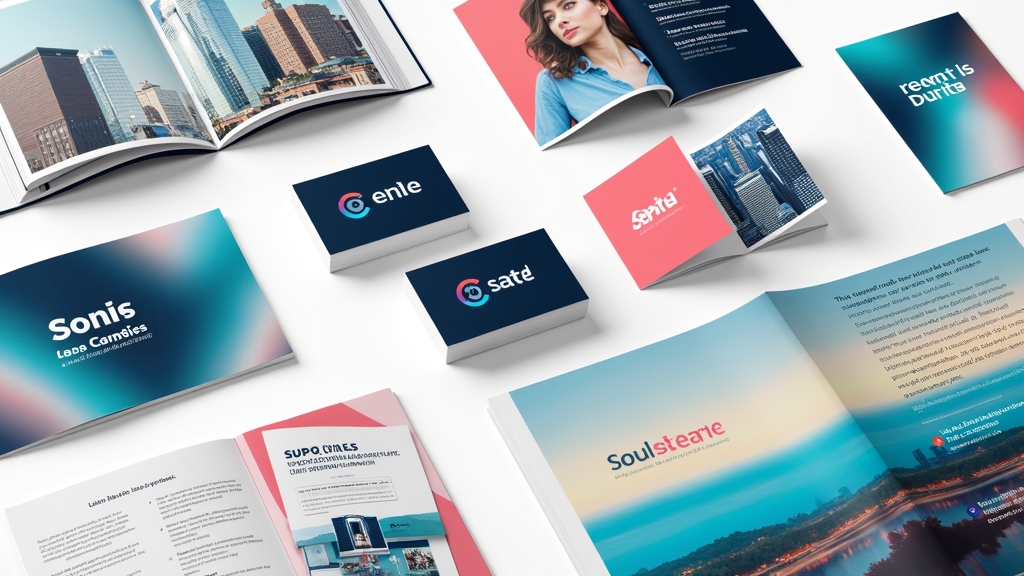Effective Marketing Collateral Design: Strategies for Success
Introduction to Marketing Collateral
Marketing collateral refers to the collection of media used to support the sales and marketing of a product or service. This can include brochures, flyers, business cards, and digital assets like e-books and social media graphics. Understanding how to create effective marketing collateral is essential for any business looking to communicate its message clearly and attractively.
Effective marketing collateral not only informs potential customers about your offerings but also helps establish your brand identity. In today’s competitive market, having well-designed materials can make a significant difference in capturing attention and driving engagement. Let’s explore the various types of marketing collateral and strategies that can lead you to success.
Types of Marketing Collateral
Print Materials
Print materials are tangible items that potential customers can hold in their hands. They often leave a lasting impression due to their physical presence.
Brochures and Flyers
Brochures provide detailed information about products or services while maintaining an attractive layout. Flyers are typically more straightforward, designed for quick distribution at events or through mailings. Both should be visually appealing and contain clear messaging.
Business Cards and Stationery
Business cards are essential networking tools that convey professionalism. Your stationery—like letterheads or envelopes—should align with your branding efforts, ensuring consistency across all printed materials.
Digital Assets
Digital assets have become increasingly important as businesses move online.
E-books and Whitepapers
E-books offer in-depth knowledge on specific topics relevant to your audience, establishing authority in your field. Whitepapers present research findings or solutions to industry problems, making them valuable resources for decision-makers.
Social Media Graphics
Social media graphics play a crucial role in engaging audiences on platforms like Facebook, Instagram, and Twitter. Eye-catching visuals paired with concise messages can drive traffic back to your website or promote special offers effectively.
Principles of Effective Marketing Collateral Design
Consistency in Branding
Consistency is key when designing marketing collateral. Use the same logo, colors, fonts, and styles across all materials so that customers easily recognize your brand no matter where they encounter it.
Visual Hierarchy and Layout
A strong visual hierarchy guides readers through your content naturally. Use headings, subheadings, images, and white space strategically so that important information stands out while still being easy on the eyes.
Typography and Color Schemes
Choosing the right typography enhances readability while reflecting your brand’s personality. Similarly, color schemes evoke emotions; select colors that resonate with your target audience while remaining consistent with your overall branding strategy.
Tools and Software for Designing Marketing Collateral
Graphic Design Software Options
There are several graphic design software options available today that cater to different skill levels:
- Adobe Creative Suite: A professional-grade toolset ideal for experienced designers.
- Canva: User-friendly software perfect for beginners looking to create stunning designs quickly.
These tools help you bring creativity into every piece of collateral you produce!
Online Design Platforms
Online platforms like Visme or Piktochart allow users without extensive design skills to create professional-looking presentations or infographics easily. These platforms often come with templates tailored for various industries which save time during the design process!
Best Practices for Creating Impactful Marketing Collateral
Understanding Your Audience
Before creating any material, take time to understand who you’re targeting! Research demographics such as age group preferences regarding style choices (color schemes/typography) will ensure relevance throughout each piece produced!
Crafting Compelling Messages
Your messaging should be clear yet persuasive! Focus on benefits rather than features; explain how what you offer solves problems faced by potential customers instead!
Incorporating Calls to Action
Every piece of collateral should include a call-to-action (CTA). Whether it’s visiting a website or signing up for newsletters—CTAs guide readers toward taking desired actions after engaging with content provided!
Measuring the Effectiveness of Your Marketing Collateral
Key Performance Indicators (KPIs)
To assess whether your marketing collateral is effective consider tracking KPIs such as conversion rates from leads generated via brochures/flyers versus those obtained digitally through e-books/social media ads!
Gathering Feedback from Target Audiences
Collecting feedback directly from users provides invaluable insights into what works well—and what doesn’t! Surveys following campaigns allow businesses insight into customer perceptions regarding quality/design effectiveness leading future improvements accordingly!
Case Studies: Successful Marketing Collateral Examples
Analysis of High-Impact Designs
Examining successful examples reveals common traits among high-impact designs including clarity in messaging combined with eye-catching visuals! For instance companies like Apple utilize minimalist approaches emphasizing product features without overwhelming consumers visually speaking!
Lessons Learned from Industry Leaders
Industry leaders teach us valuable lessons about adapting strategies based upon changing trends within markets! Regularly reviewing competitor successes/failures keeps brands ahead ensuring continued relevance amidst evolving consumer preferences over time too!
Conclusion: The Future of Marketing Collateral Design
As technology continues evolving rapidly so does our approach towards designing effective marketing collateral! Embracing innovative techniques alongside traditional methods ensures businesses remain competitive moving forward while effectively communicating core messages resonating deeply amongst targeted audiences everywhere they go next!
📢 Explore More: Continue Your Journey!
If this article helped you understand effective marketing collateral design better check out The Importance of Brand Consistency! It covers how maintaining uniformity across all channels strengthens customer trust helping you build lasting relationships more effectively.














![NEEWER 55W 18"/45cm Ring Light Kit [New Version], 5600K Dimmable ...](https://m.media-amazon.com/images/I/414QLqvZWLL._AC_.jpg)








